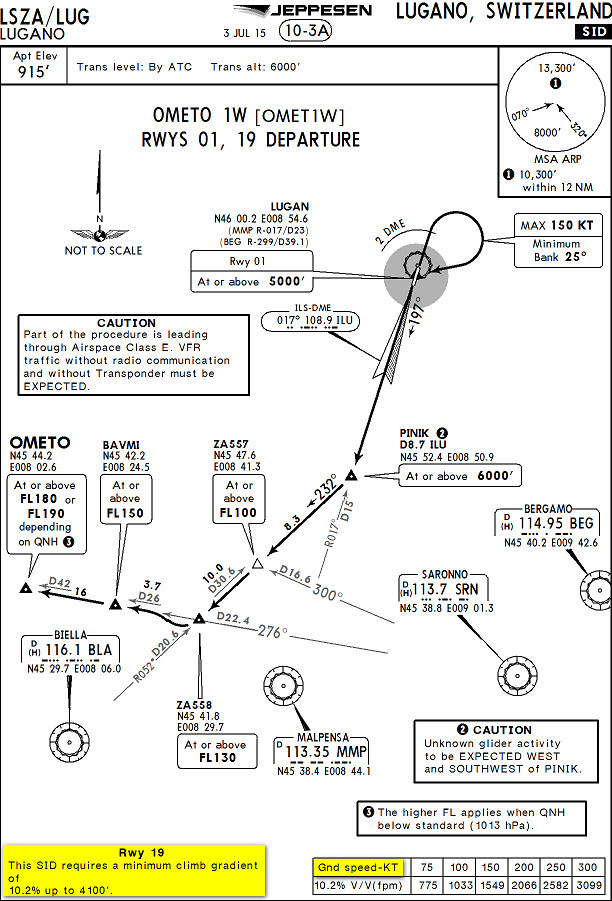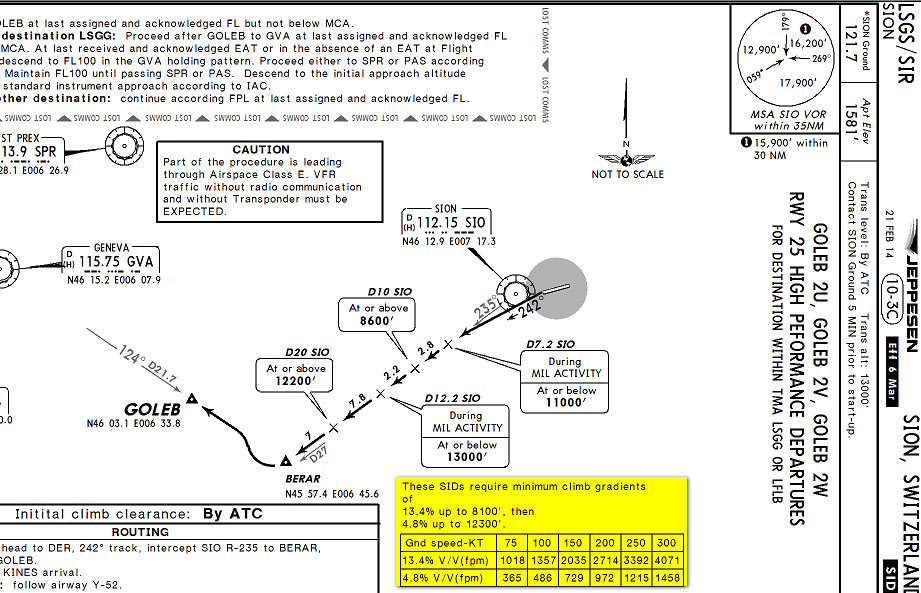SID minimum gradient, and wind?
Let’s say a SID has a minimum gradient of 10%.
This is based on the ground speed so must be checked bearing in mind the prevailing winds, but does anyone actually do that? Especially as the wind will change with altitude.

This one is even better, with 4.8% to 12300ft. One could easily get a total wind reversal there

Climb rate (fpm) = Climb gradient (%) x Airspeed (kts)…I noticed the table on the plate. This formula may work as well.
Peter wrote:
but does anyone actually do that?
Yes.
Peter wrote:
Especially as the wind will change with altitude.
Usually the high gradient is only required for a few thousand feet so one “worst case” (=least headwind component) wind should be enough. Lugano is a special case where the gradient is required until reaching 8100ft. With significant changes in wind, you can either do the whole calculation using the least favorable wind or – if that does not result in an acceptable gradient – split your climb into segments (say GND-3000ft, 3000-6000ft, 6000ft-8100ft) using the winds given for GND, 5,000ft and 10,000ft. In our commercial operation we would be denied departure, should we get ramp checked and can’t show such a calculation.
USFlyer wrote:
Climb rate (fpm) = Climb gradient (%) x Airspeed (kts)
As Peter pointed out just above your post, it is ground speed (and ground miles) that counts for obstacle clearance and not airspeed (and air miles)!
Rwy20 yes, I think the formula will work for gs. In any case, it would take a pretty powerful plane to get out at that climb gradient given the altitude the field is at.
w_n thank you, I assumed that % gradient was factored for wind (50% headwind, 150% tailwind) in the obstacle domain on departure to platform altitude as part of the NTOFP calculations. Factored ground speed would be used for any minimum % gradient requirement, and presumably 2nd segment one engine inoperative from the time of entering IMC? Sion must be climb limited mass for most commercial air transports?
I am really impressed these calculations are actually made!
Surely there must also be an app for doing them? Or maybe there is a quick method, based on some sort of graphic (a bit like some people use for W&B)?
Surely there must also be an app for doing them?
CE510 has a book of tables for calculation at a variety of weights, configurations and temperatures. And an ipad app which is far easier and more accurate.
How do you get the winds aloft for different levels inside a 10000ft deep mountain canyon?
You have to provide an average headwind/tailwind into the calculation. Complying with the SID gradient is only an issue OEI in the CE510.